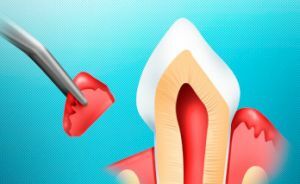 In dentistry there are such operations, which are called patchwork. They got their name because of the way they are performed, when the doctor performs excision of a small area of the gum. This allows access to bacterial deposits on the roots.
In dentistry there are such operations, which are called patchwork. They got their name because of the way they are performed, when the doctor performs excision of a small area of the gum. This allows access to bacterial deposits on the roots.
On the gums, vertical incisions are made and a patch resembling a flap is formed. Such surgical intervention gives the doctor an opportunity to clean the roots, polish them.
Upon completion of the surgical procedure, the gingival flap is hemmed. The entire operation is under the influence of local anesthesia.
Contents of
-
- Objectives of
- Limitations and contraindications
- Preparation for
- intervention Procedure
- Postoperative period:
- recommendations Possible complications
- Question price
Objectives of
The primary goal of the patchwork operation is to reduce the gingival pockets and create a close fit to the tooth. Bacterial deposits, granulation tissue under the gums are eliminated. After the operation, a noticeable decrease in the gingiva is observed.
Patchwork surgery is an effective method of treatment for periodontitis and other periodontal diseases. During the intervention, the doctor has the opportunity to visualize the affected area in order to maximize its processing, clean and remove the defective tissue.
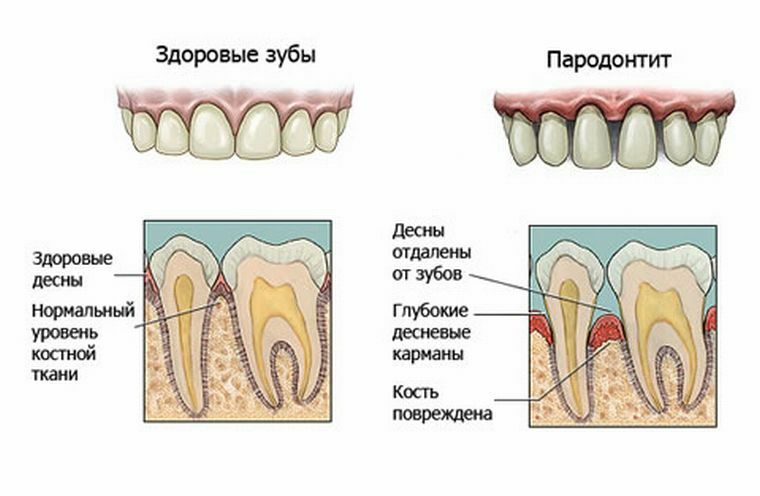
Indications for surgical treatment are the following cases:
- periodontitis of the second stage and above;
- abnormal tooth structure;
- the presence of gingival pockets, the depth of which exceeds the depth of 5 mm;
- increased mobility of the teeth, resulting in deformation of the entire series;
- thinned gingival tissue;
- fibrous lesions in the gum;
- strong bleeding;
- puffiness, inflammation of the gums.
Limitations and contraindications
In some cases, surgery with patchwork is contraindicated:
- weakened body protection functions;
- hepatic impairment;
- heart failure;
- presence in the body of artificial valves, joints;
- too much destruction;
- strongly pronounced change in the alveolar process.
Preparing for intervention
Before the operation is scheduled, the patient is required to undergo a screening and to pass the necessary tests. In some cases, the dentist can send the patient to the examination to the local therapist and cardiologist. 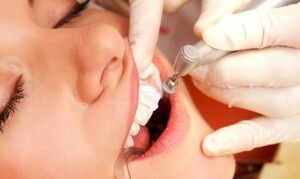
Once all the results are obtained, the patient is assigned a set of preparatory measures:
- carries out a professional dental cleaning, in order to eliminate pathological bacterial plaque and stones;
- requires mandatory strengthening of the immune system, for this you need to take vitamin complexes for one week;
- administration of anti-inflammatory drugs, especially if there is an infection within the oral cavity.
If the patient has some chronic diseases, additional procedures are prescribed.
Progress of operation
All operative interventions in surgical dentistry are performed under anesthesia. And in each case, anesthesia is selected individually for a particular patient, based on the individual characteristics of his body.
Operation on the gums is performed as follows:
- local anesthesia is done, but if the patient wishes, general anesthesia is possible;
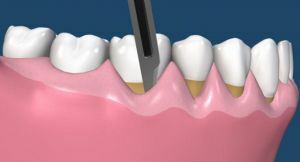
- the affected area is treated with a disinfectant;
- determination of the size of the flap on the muco-periosteal tissue;
- within two adjacent teeth, two vertical incisions are made, the length of which depends on how much the gum edge is close to the alveolar mucosa;
- is a horizontal cut, combining the resulting vertical incisions, it is carried out at 1 mm from the edge of the gum;
- the resulting tissue flap is cut off;
- eliminates areas of inflamed tissue;
- cleans roots of pathogenic deposits, stones;
- peeled roots are polished;
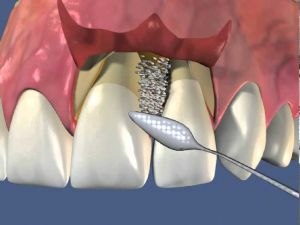
- the treated area is disinfected with a special preparation;
- restores bone shape due to the introduction of artificial material;
- the excised flap returns to its place and is sewn;
- the formed irregularities of the alveolar process are smoothed out using a drill;
- a small bandage, moistened with saline solution, is applied to the flap and pressed down for three minutes;
- is applied a periodontal protective dressing.
Depending on which seams were used, they are removed by a doctor within ten days, or they dissolve themselves.

Postoperative period: recommendations
The postoperative rehabilitation period lasts several days, during which it is necessary to strictly follow all the recommendations of the attending physician:
- When the operation is completed, the patient is given a gauze swab to be bitten by the jaw. After two hours you can remove it.
- The next 8 weeks is to quit smoking. It is in the interest of the patient. In smokers, the healing process lasts much longer, and nicotine can be triggered by bleeding gums. In this case, you need to take a bandage swab moistened with clean water, attach it to the place of the operation, hold for 15 minutes.
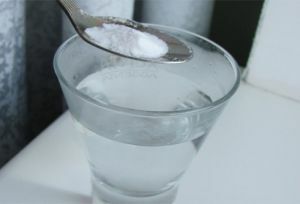
- Taking Aspirin, due to a blood thinning effect, can cause swelling and bleeding.
- After the operation, it is forbidden to brush your teeth or rinse your mouth for 8 hours. After this, rinse only with a special solution. Half a teaspoon of water take half a teaspoon of salt and soda. Use only warm solution. Rinse every 3 hours. You can use about, 2% solution of Chlorhexidine.
- To clean the teeth very carefully to prevent injury to the gums. When the seams are removed, use a special brush with very soft bristles to clean the teeth.
- After surgical procedures, you will see a strong puffiness of the gums. To reduce it on the first day, you can periodically apply ice to the operated area. As a rule, swelling starts to go off for 5-6 days.
- After the operation for the first two days it is better to eat light food and preferably cool, for example, yogurt, ice cream, omelets. Liquids drink more, but carefully. Hot drinks are excluded.
- The first week after the intervention to give up an active lifestyle, visiting the sauna, swimming pools.
Possible complications of
The patient may experience discomfort after the operation, even if everything went well. Problems can be caused by the following factors:
- for three weeks, there is mobility of teeth, after this time they are strengthened;
- teeth can give out a reaction to the temperature effect, chemical irritants, the use of a desensitizing paste will help to get rid of the sensitivity;
- muscle functionality after treatment is fully restored in two weeks.
Price of the issue
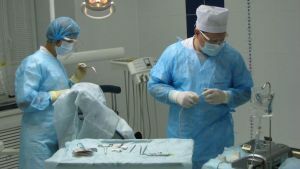 The approximate price of the graft surgery on the gums starts at 1500 rubles. A more accurate calculation is performed by the surgeon after a detailed examination of the patient.
The approximate price of the graft surgery on the gums starts at 1500 rubles. A more accurate calculation is performed by the surgeon after a detailed examination of the patient.
After the diagnosis, it becomes clear how much surgery is expected, what tools will be needed, how many medications will be needed to successfully perform the operation, and what additional measures are needed in preparation for the procedure.
